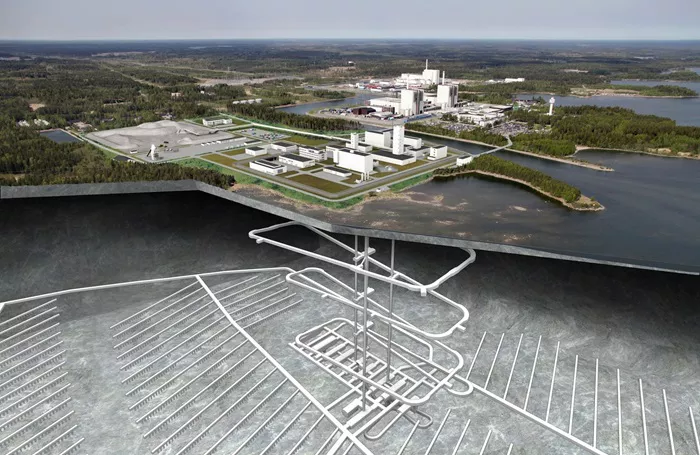Construction has officially begun on Sweden’s Spent Fuel Repository in Forsmark. The groundbreaking ceremony was attended by Minister for Climate and Environment Romina Pourmokhtari, who marked the start of the project. The repository is expected to be operational for nuclear waste disposal by the 2030s, with full expansion completed by the 2080s.
The facility will be built approximately 500 meters below ground in bedrock that is 1.9 billion years old. It is designed to store around 12,000 tonnes of spent nuclear fuel, contained in 6,000 specially designed canisters. The surface area of the repository will span 24 hectares, equivalent to 44 soccer fields. Once fully expanded, the underground facility will include over 60 kilometers of tunnels.
Sweden is recognized as a global leader in nuclear waste management. The Swedish Nuclear Fuel and Waste Management Company (SKB), owned by the country’s nuclear power plants, has spent more than 40 years researching and developing technology for the safe geological disposal of nuclear waste. In autumn 2024, SKB received the necessary environmental permits and approvals from the Land and Environmental Court, allowing construction to proceed.
“This is a historic day for Sweden’s nuclear waste program. We are taking a crucial step toward a permanent solution for spent nuclear fuel. This project ensures the continued production of fossil-free electricity,” said Stefan Engdahl, CEO of SKB.
Minister Pourmokhtari, representing the Swedish government, participated in the groundbreaking ceremony. The construction of the repository will take approximately ten years before it can begin accepting nuclear waste. After that, the facility will be gradually expanded over several decades.
The initial phase involves two years of above-ground preparatory work, including the construction of a rock storage facility, a water treatment plant, a bridge over the cooling water canal, and forest clearing. Following this, work will begin on excavating the underground tunnels and storage areas.

